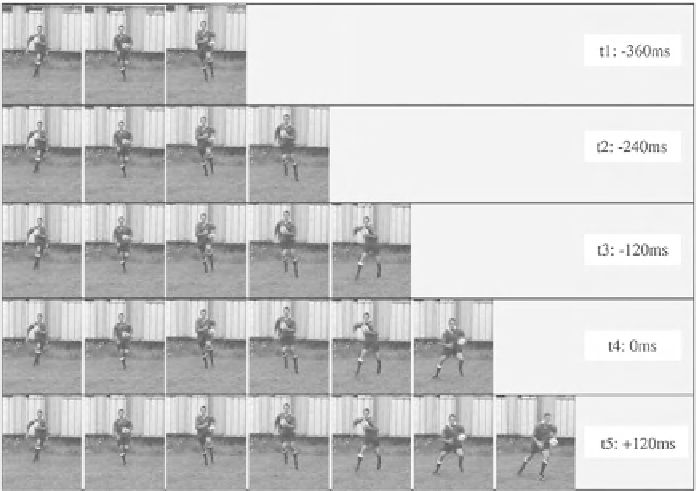Biomedical Engineering Reference
In-Depth Information
Fig. 13.1
Occlusion times used in the video-based work of Jackson et al. [
33
]
relevant for the subject. The occlusion-based methodology relies on the link between
perceptual capabilities and performance of athletes [
60
] (Fig.
13.1
).
However, some criticisms and drawbacks inherent to the use of video can be
formulated:
The video is a two-dimensional display. Therefore, it does not provide access to all
the visual information of a real game situation [
4
,
61
]. But the stereoscopic infor-
mation can be critical to performance since it provides depth information [
31
,
37
].
The three-dimensional video nevertheless allows to overcome this limitation.
Another disadvantage of the video is that the viewpoint is fixed and the subject
cannot change the way he sees the environment. Therefore, it is always the same
information that is displayed. When an individual moves in reality, it can observe
new visual information according to its viewpoint. By changing his angle of view,
a soccer goalkeeper for example can obtain information about the orientation of
the foot of the kicker or about the displacement of other player behind this kicker.
The making of video clips can also be a problem. The presence of the camera
indeed can force the players to adapt their behavior to avoid it. For example, as
part of the study of deceptive movements in rugby, researchers filmed a player
simulating this type of movement [
33
]. But it raises the question of the relevance
of such a movement: would this deceptive movement have been effective in real
one-against-one duel? Does his deceptive movement be the same if it has been
done against a real opponent?

